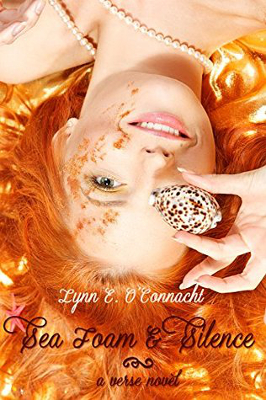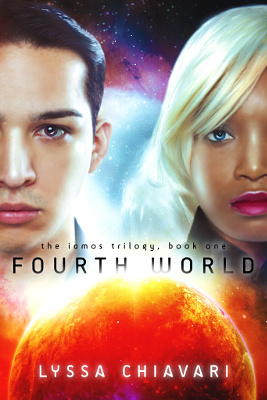 First Published: 9th June, 2016
First Published: 9th June, 2016
Genre: Young Adult Fantasy / Verse Novel
Available: Amazon.com | Amazon UK
A little mermaid watches the tall-crabs and starts to think they might be people too, but heading to land to find out will come with a cost.
This is a retelling of The Little Mermaid written in free verse. It’s hard to judge length with long poetry, but the book is around novel length. Fewer words on each page means it’s a relatively quick read.
The mermaid is set the deadline of a year to find love or be turned into sea foam. There are three main sections, with the first covering her life at sea, the second the time up to the deadline, and the third the time after. I liked that it didn’t only focus on the time on land looking for love. It allowed the contrast between life as a mermaid and life on land to be clear, as well as considering new challenges once the initial situation is resolved.
The mermaids were distinctly mermaids, rather than feeling like the author wanted to write humans with a few references to having a tail (which is unfortunately what too many mermaid stories end up doing). They live in a group of sisters, though it’s noted some become fathers during mating time. Among mermaid culture, it’s not considered odd that some don’t take direct part in mating. It’s only on encountering human culture that things start to get complicated, with human concepts of love, marriage and gender. Hunting humans for food is a stable part of their lives, which the little mermaid starts to challenge, but it isn’t portrayed in a binary good and evil way. The same goes for the witch who makes the bargain that gives the mermaid legs. The witch obviously has an agenda of some sort, but what that might be is ambiguous. It’s not a story with a villain, but one that deals with the more everyday difficulties of finding a place in the world.
The goal of finding love is difficult as the mermaid is confused about what that means. There are conflicting messages between all love being love and romantic love being the only one that counts. The narrative falls on the side of love being love in any form. There are also differences between human cultures in how things are viewed, rather than making this only a mermaid versus human issue.
Though it’s clear that the mermaid is asexual, I was less certain about how she viewed romantic attraction. It’s debatable where she falls on the romantic / demiromantic /grey-romantic lines, but she did appear to only potentially consider people that way after knowing them. There is also an aromantic asexual character and a lesbian, along with a polyamorous queerplatonic relationship being shown.
Every step she takes on land causes pain, so she has a fantastical chronic pain condition. At first, this means it’s difficult to walk, but she slowly adapts to the pain. It was good that there’s no magic cure here, though I would have liked to see her having bad pain days when she couldn’t do everything she wants to do. It’s not that it’s unrealistic to adapt to a certain level of pain or to find some things distract from the pain, but even the best pain management scheme will have times when it doesn’t work out.
She is mute and learns sign language to communicate. There’s one instance where someone expresses frustration at her not being able to speak verbally. This is in part because her early sign language is fairly crude and that makes communication difficult, but it’s still a moment I found jarring. I did generally like the sign language though, as well as the use of emoticons in places to convey facial expressions.
There’s a reference to people having different skin tones, but the main characters appear to be white. The mermaid doesn’t have much of a concept of race, so most descriptions are vague.
This is an enjoyable book with a focus on the issues of finding a place to belong. The free verse style works well to portray how the mermaid thinks and her confusion as she tries to figure things out. The chronic pain aspect is where I think it could have used a bit more exploration. The asexual and aromantic aspects were the strongest. Overall, this is worth a read for anyone who loves mermaids and verse novels.
 First Published: December, 2015
First Published: December, 2015 Series: The Iamos Trilogy, #1
Series: The Iamos Trilogy, #1 Series: Root Code, #3
Series: Root Code, #3